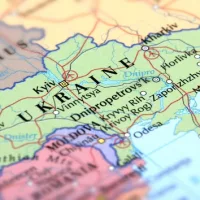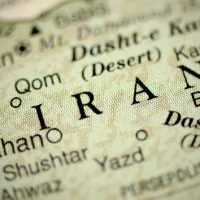 iStock/Thinkstock(MONROVIA, Liberia) — No one would mistake Liberia for a model of prosperity, but the Ebola-weary West African nation certainly has a rich history like no other: It was colonized by freed U.S. slaves.
iStock/Thinkstock(MONROVIA, Liberia) — No one would mistake Liberia for a model of prosperity, but the Ebola-weary West African nation certainly has a rich history like no other: It was colonized by freed U.S. slaves.
Here are some details about its intriguing origins:
1. The sight of freed slaves so unnerved one particular group of white Americans in the early 1800s that they concocted a plan to resettle them in Africa. It worked, and the American Colonization Society, as the members called themselves, found a partial solution to their “problem” by developing a colonization project that would eventually produce the West African nation of Liberia, according to the U.S. State Department Office of the Historian.
By 1821, the U.S. Navy even helped in the search for land to accommodate what remained of the 88 free black settlers and three society members who had set sail for Sierra Leone the year before in search of territory to claim. “The Navy officer in charge, Lieutenant Robert Stockton, coerced a local ruler to sell a strip of land to the Society,” according to the State Department.
The indigenous Africans initially staged violent resistance against the colony before other U.S. colonization societies bought additional land, and most of those settlements combined up to 20,000 people into a single organization that forged a rocky path toward a sovereign state, declaring its independence from the American Colonization Society in 1847, the State Department website says.
2. U.S. President James Monroe committed so many government resources to the project that Liberia’s capital, Monrovia, was named in his honor.
3. Despite helping to establish Liberia, however, the U.S government didn’t recognize the nation until 1862, “because of fears of the impact this might have on the issue of slavery in the United States,” according to the State Department.
4. Liberia’s first president, Joseph Jenkins Roberts, was born and raised in the U.S., overseeing a U.S.-style of government that excluded indigenous Africans from citizenship until 1904, according to About.com.
5. With an eye toward home, the founders designed the Liberian flag with red and white stripes and a blue square resembling the U.S. flag, but only one white star that “symbolizes the freedom that the ex-slaves were given and the blue square stands for the African mainland,” according to the Maps of the World website. “The eleven stripes on the flag of Liberia represent the eleven signatories of the Liberian Declaration of Independence.”
Follow @ABCNewsRadio
Copyright 2014 ABC News Radio















